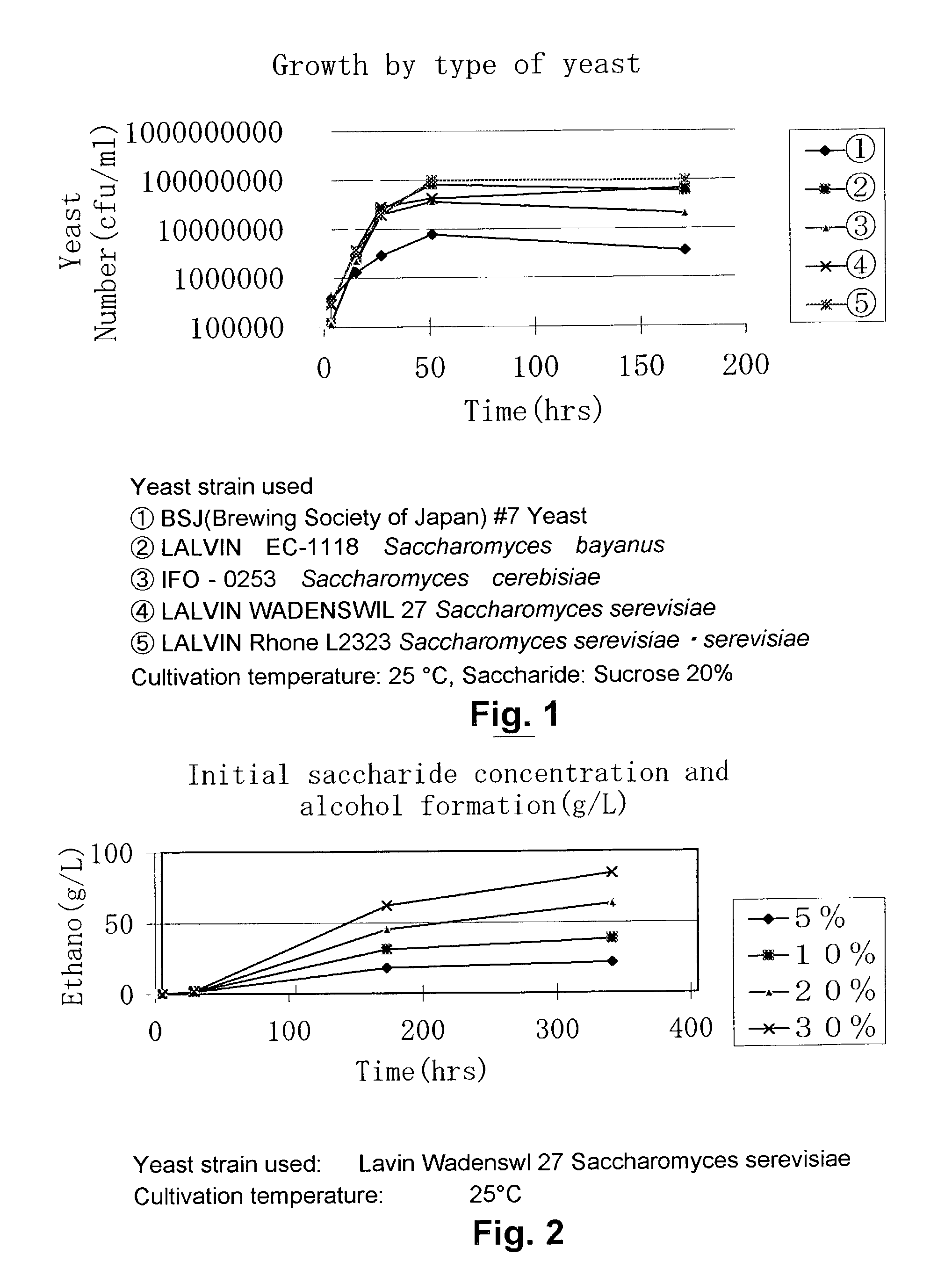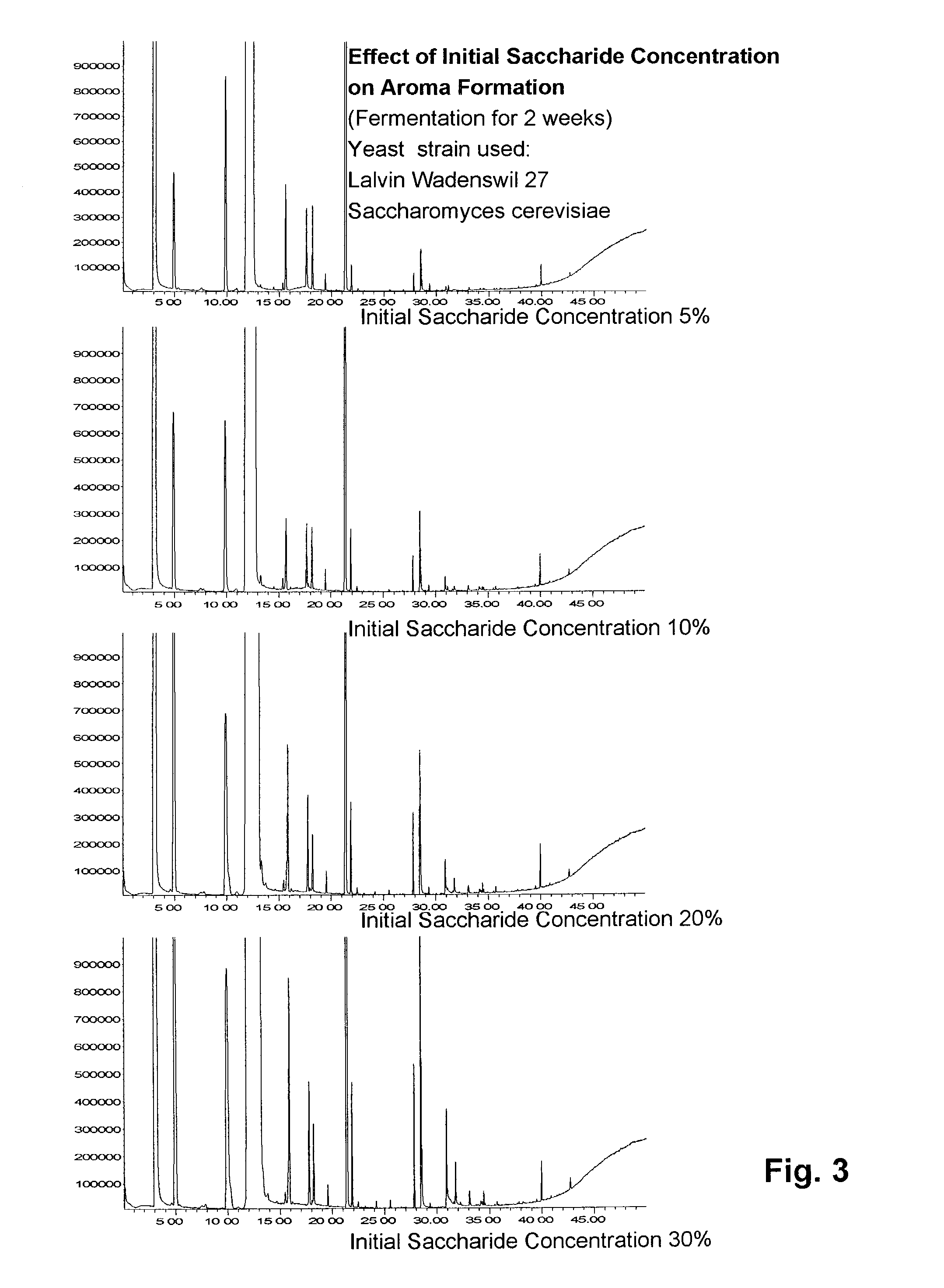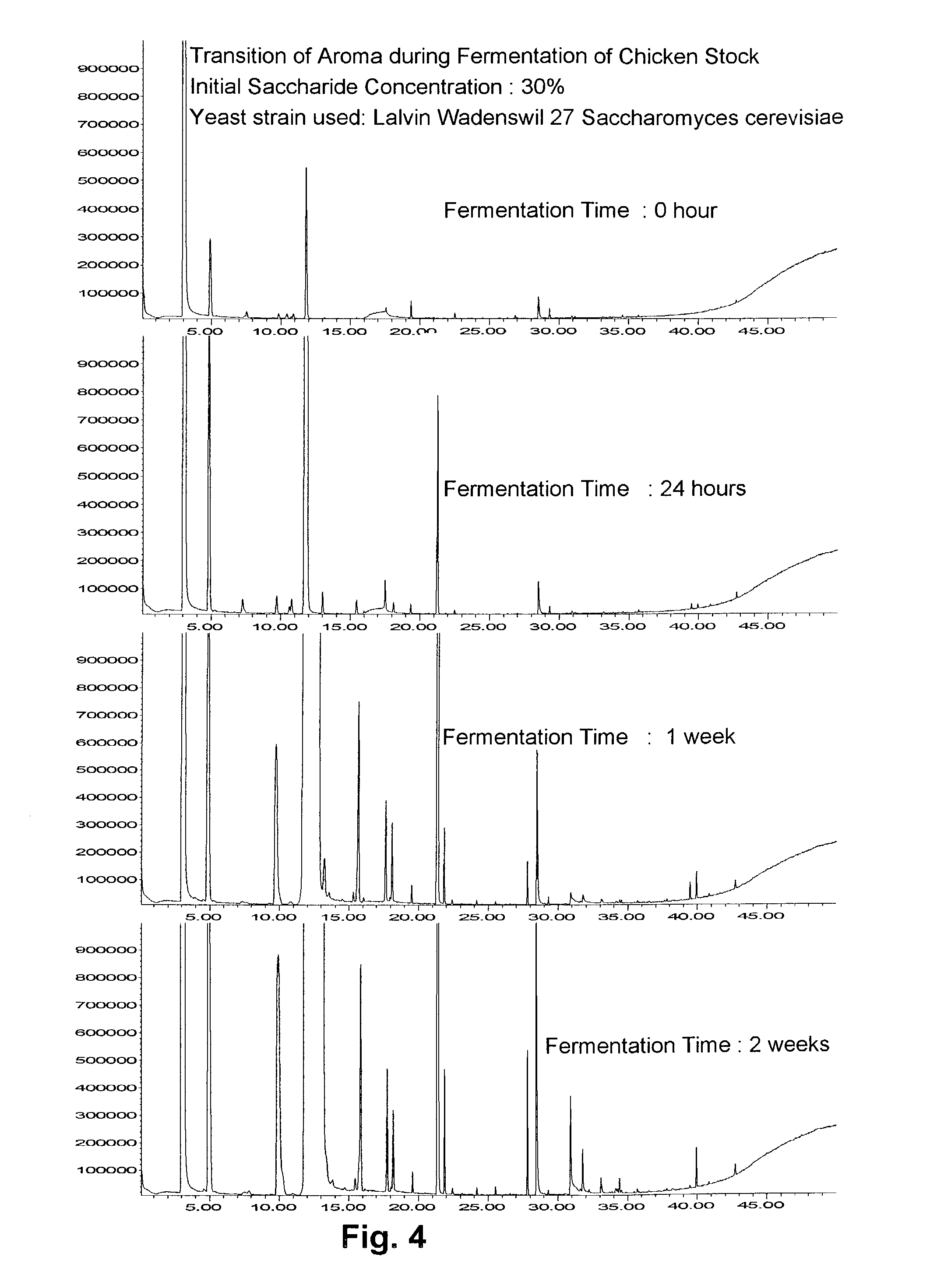Alcoholic beverages derived from animal extract, and methods for the production thereof
a technology of animal extract and alcoholic beverages, applied in the field of fermented beverages, can solve the problems of spoilage and bacterial toxins, limited options available for altering the alcohol content of resulting beverages, and difficulty in fermented beverages based on animal extracts
- Summary
- Abstract
- Description
- Claims
- Application Information
AI Technical Summary
Benefits of technology
Problems solved by technology
Method used
Image
Examples
example
[0073]6 kg whole chicken, 14 L water, 250 g carrots, 700 g onions, 300 g leek, 250 g celery, 1 bay leaf, 6 black peppercorns, and 20 g of tarragon were used to produce as a base to produce a beverage. The whole chicken was separated into leg meat and breast meat, its skin and bones removed, and it was steamed with high heat, then rinsed clean with cold water. The whole chicken was then put into a stock pot with water and brought to a boil. After scum and fat were removed, aromatic vegetables and spices were added, and the mixture was cooked for 2.5 hours at 95° C. Next, herbs were added for aroma and the mixture was cooked for one more hour. The chicken broth was made from the resulting filtrate.
[0074]The chicken broth was boiled with 0.01 kg sucrose per 1 kg of chicken broth for 30 minutes to kill bacteria. Following this sterilization process, the broth was cooled to 37° C. and inoculated with 1% of fresh culture of Lactobacillus gasseri. After the inoculation, the broth underwent...
PUM
| Property | Measurement | Unit |
|---|---|---|
| temperature | aaaaa | aaaaa |
| time period | aaaaa | aaaaa |
| fermentation time | aaaaa | aaaaa |
Abstract
Description
Claims
Application Information
 Login to View More
Login to View More - R&D
- Intellectual Property
- Life Sciences
- Materials
- Tech Scout
- Unparalleled Data Quality
- Higher Quality Content
- 60% Fewer Hallucinations
Browse by: Latest US Patents, China's latest patents, Technical Efficacy Thesaurus, Application Domain, Technology Topic, Popular Technical Reports.
© 2025 PatSnap. All rights reserved.Legal|Privacy policy|Modern Slavery Act Transparency Statement|Sitemap|About US| Contact US: help@patsnap.com



